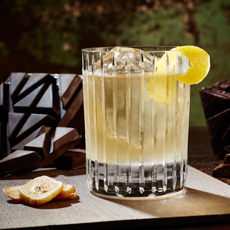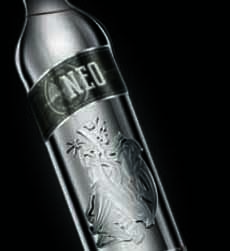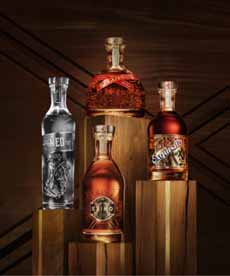PRODUCT: Facundo Baccardi Premium Rum & A Chocolate Banana Cocktail Recipe
 [1] Chocolate banana cocktail. The recipe is below (photos #1, #2 and #3 © Bacardi).
|
Weekends are a time for testing new cocktail recipes. The Chocolate Banana Cocktail Recipe below is from the Facundo Rum Collection, a luxury portfolio.
If we were lucky enough to have a bottle, we’d sip it straight as the rum was intended, and substitute another white rum in the cocktail. Bacardi’s Facundo Bacardi Rum Collection, introduced in 2013, is the distiller’s commitment to the emerging category of premium sipping rums. The rums are made from the company’s private rum reserve: the finest batches of rum aged for very long times. The line was championed by Facundo L. Bacardi, who strongly felt that the company should be a player in the emerging category of premium rums. The four expressions range from $45-$250 a bottle. They are made in different styles and produce a wide range of flavor experiences. For example, the first rum in the collection, Facundo Neo, is a blend of rums that have been aged for up to eight years. It’s not exactly your basic quality brand white rum, used to make a Mojito or Piña Colada. Regular white rum is aged for a year, sometimes more. The result of the extra aging and the fact that the “best” barrels were aged: Neo’s flavor profile is beautifully balanced, with notes of banana, almonds, and freshly cut grass. To experience them, sip them neat or on the rocks. If you’re a person for whom money is no object, you can use whatever rum you like in mixed drinks. But truth to tell with the recipe below, after you mix vermouth and two liqueurs with the rum, only the most professional palate could articulate the difference. It’s easy to understand the age categories of tequila, scotch, and other spirits. The producing countries have laws that govern, among other things, how long the spirit has been aged prior to bottling. For example, Mexican laws govern how many months a tequila can be aged in order to be called silver, reposado, anejo, extra anejo tequilas (details). With rum, aging can last from one to thirty years or more, but you often won’t find a number on the bottle*. There are exceptions, such as Appleton (the top expression is 50 years old!) and Flor de Cana. The Facundo expressions include Facundo Neo Rum, Facundo Eximo Rum, Facundo Exquisito Rum and Facundo Paraiso XA Rum. Each is aged longer than the next. But as with most rums, don’t expect to know how long that aging period was. That’s because, unlike other spirit-producing areas, Caribbean countries did not stake their claim to exclusivity by passing appropriate laws to protect their rights, i.e., that only alcohol distilled in the Caribbean can be called rum. (Scotch can only be produced in Scotland, bourbon can only be produced in the U.S., tequila in Mexico, etc.) |
|
|
As a result, rum has no consistent standards among countries. Beyond the Caribbean, rum is now produced in Australia, India, Reunion Island, South America, and elsewhere around the world. That makes any rules and regulations hard to enforce. Even proofs vary (40 proof vs. 50 proof for white rum, for example). Thus, Mexico requires white rum to be aged a minimum of 8 months. The Dominican Republic requires one year. Venezuela requires two years. Naming standards also vary. Argentina defines rums as white, gold, light, and extra light. Barbados calls them white, overproof, and matured. The U.S. defines the categories as rum, rum liqueur, and flavored rum [source]. Some distillers use the word “premium” to describe their best-aged spirits. Another common description is the word “anejo,” old. “Gran anejo” is even older. But none of these terms tells you how long the rum has aged. It’s the blender or distiller who decides what to call it. In their marketing literature, you’ll find terms like aged, aged even longer, and aged extensively—without explanation. Here’s an article that tries to explain what cannot be explained. So don’t try to figure it out: Just enjoy it. Beyond the Banana Daiquiri: a banana-chocolate cocktail for those who like to drink their dessert. Ingredients In a mixing glass, stir all the ingredients with plenty of ice. Strain into a rocks glass with a large ice cube. Garnish with a dry banana chip and a lemon peel. ________________ *Age is beginning to appear in some rum bottles, such as Appleton and Flor de Cana aged rums. But again, statements of age may vary by country. For example, a Scotch may be a blend of ages from 8 to 15 years, but by law it has to specify the youngest Scotch in the blend, e.g., 8 Year Old. It’s too soon to tell what will happen with the rum category as a whole. |
||

